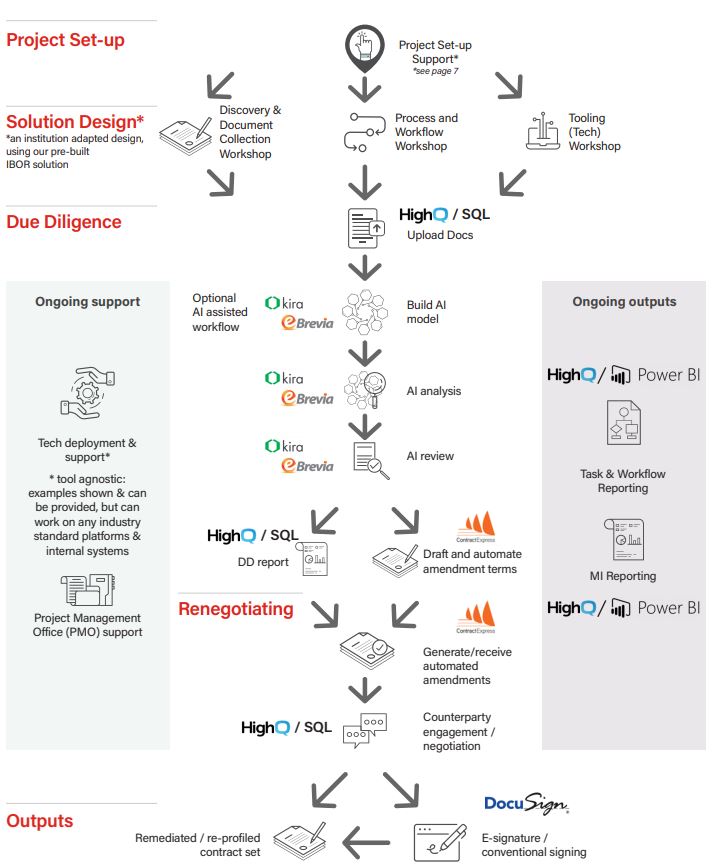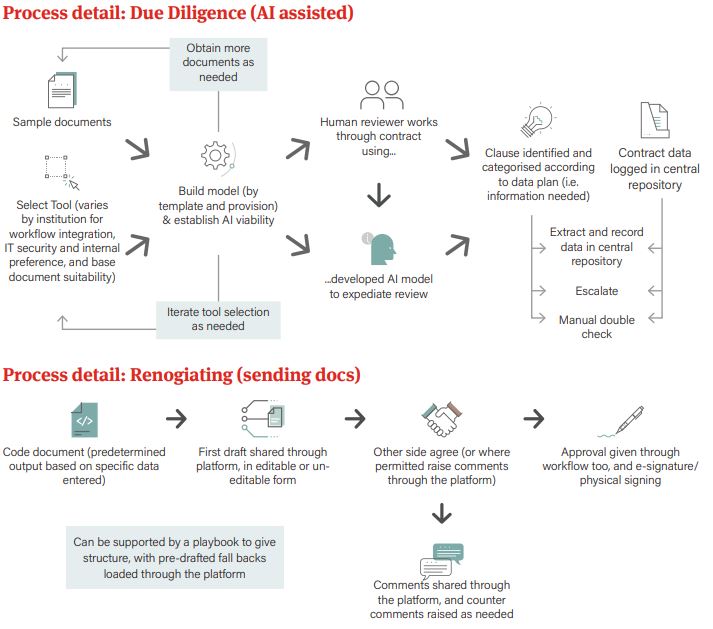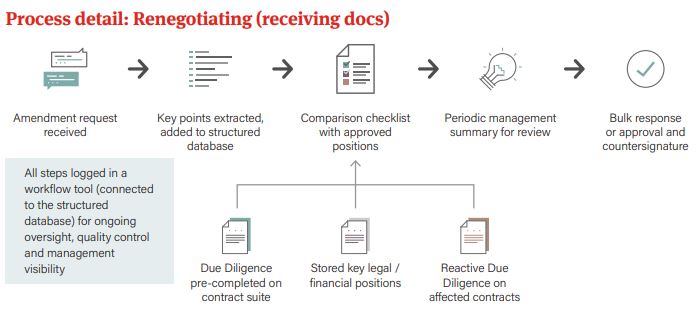Introduction
On July 27, 2017, the UK Financial Conduct Authority (FCA) announced that it would no longer
compel or persuade banks to make submissions to LIBOR as from the end of 2021. In the wake of
the LIBOR manipulation scandal, regulators found that there were few transactions taking place to
support some of the currencies and tenors for which LIBOR was published. Submissions, it was felt,
were based more on expert judgment rather than transaction data, making it subject to potential
manipulation, which in turn led to a number of criminal actions around the world.
LIBOR will cease as a benchmark by the
end of 2021. The insurance industry is
exposed to this.
This focused the attention of global regulators on benchmark
reform more generally. The IOSCO Principles of Financial
Benchmarks struggled with banks reluctant to make
submissions, and this prompted regulators needing to
convince banks to make submissions just to keep LIBOR
going. In 2014, the Financial Stability Board had already made
recommendations that financial institutions transition away
from LIBOR. The implementation of Regulation (EU) 2016/1011
in 2016 on indices used in benchmarks in financial instruments
and contracts to measure the performance of investment funds
provided further impetus for reform. Written plans were required
setting out actions that will be followed, in the event that a
benchmark changes or ceases to be provided. It also set out
processes which could lead to a national competent authority
declaring a relevant benchmark as unrepresentative.
The ICE Benchmark Administrator (IBA) which is the
administrator of LIBOR has taken steps to reform LIBOR.
IBA has also indicated the intention to continue to work with
panel banks to see if LIBOR can continue post 2021. However
they said that banks should not rely upon the continuation of
LIBOR and in the United Kingdom, the FCA has warned that
even if LIBOR continues, it will have changed as a rate and as
such there is “a high probability that it would no longer pass
regulatory tests of representativeness”. The Bank of England’s
Working Group on Sterling Risk Free Reference Rates has set
a target of end of Q3 2020 to cease issuance of GBP-LIBOR
based cash products, with tenors past the end of 2021.
This means that LIBOR will cease as a benchmark by the
end of 2021.
The insurance industry is exposed to this. Insurers have huge
sums invested and are counterparties to many financial
instruments which will remain in force after the end of 2021, and which have LIBOR (or another benchmark which will
be amended or replaced) as the benchmark for applicable
interest rates, and triggers for hedging contracts and swaps.
In addition, insurers may insure trade credit arrangements
where the underlying financial contracts use LIBOR (or another
benchmark which will be amended or replaced). They are
insuring financial institutions who, as the issuers of financial
instruments, may have their own exposures arising from this,
the directors and officers of businesses that may also be at risk
from the same issues in financial contracts that their businesses
have, and the likes of pension funds and investment managers.
The list goes on.
The regulators want to know what the insurance industry is
doing to manage its exposure to benchmark reform, across its
investment portfolios and in considering the risks that it writes.
After focusing for much of the year on the issues arising from
COVID-19, most regulators have resumed work on LIBOR from
June 1, 2020.
What do regulators expect insurers to do with exposure to
LIBOR references? In most EU member states there have been
clear statements requiring market participants, including the
managers of insurance companies, to address the exposure
to the demise of LIBOR (and other benchmarks). This work
needs to be undertaken as soon as possible if it is not already
underway.
This short paper looks at the issues for insurers and explains
how Norton Rose Fulbright can assist in managing the risk
associated with benchmark reform by identifying where
contracts need to be renegotiated and with innovative and cost
efficient solutions. We can also assist in the risk management
analysis of the risks written as part of the underlying business.
Regulators want to know what the
insurance industry is doing to manage
its exposure to benchmark reform.
Regulatory risks and expectations relating to LIBOR
What do regulators expect insurers to do with exposure to LIBOR references? Most regulators have
made clear statements requiring financial institutions like insurance companies to address the
exposure to the demise of LIBOR (and other benchmarks). This work needs to be undertaken as
soon as possible if it is not already underway.
The change from LIBOR (or other relevant benchmarks) will
have implications for insurance company risk management and
therefore is of concern to regulatory authorities. Insurers hold
a number of long-dated instruments to cover their liabilities.
Life insurers and annuity providers rely on derivatives to hedge
exposure to differences in the values of assets and liabilities
over long time horizons. According to the UK regulator, the
Prudential Regulation Authority, insurance companies in
the UK have entered into around £323bn of LIBOR-linked
derivative contracts. References to LIBOR can also be found
in commercial loans, company pension scheme documents,
reinsurance contracts, commercial contracts, intra-group loans
and discount rates used in valuations. A small change to the
discount rate could significantly impact long-term liabilities.
Changes to LIBOR may have a knock-on impact for reinsurance
collateral arrangements.
Contracts that insurance companies have entered into may
contain “fall-back” terms that specify the position should LIBOR
not be available. Insurers should review contractual terms and
“re-paper” these documents with an alternative risk-free rate.
Insurance companies use a number of internal tools to measure,
monitor and report based on LIBOR rates or yield curves. Under
Solvency II insurers are required to discount liabilities using
risk-free rate curves that are derived from LIBOR. In February
2020, the European Insurance and Occupational Pensions
Authority (EIOPA) launched a discussion on the impact of IBOR
transition on the risk-free rate environment. Following feedback
EIOPA is planning to make recommendations for suitable steps
to reduce insurers’ exposure to the transition.
Some regulators are quite active and have written to insurance
companies to seek assurance that managers understand the
risks associated with the transition and are taking appropriate
action to move over to alternative rates by the end of 2021.
The PRA in the UK, for example, has set out initial expectations
for transition progress during 2020. The PRA has asked
insurance companies to engage actively with the wider
transition efforts in the market. Plans should include targets
in project milestones to ensure that management information
is available to track progress. Regulators expect to see
momentum on transition and will need to see evidence
of this over the course of 2020.
Findings from the UK review of firms’ preparations has revealed
that although firms have looked at exposure on their balance
sheet, they have not always looked beyond this towards wider
risk management issues such as pricing, FX-related risks,
liquidity risk and valuation.
Some firms lacked information on where their current
exposures were and did not have appropriate tools to monitor
exposure. Strong responses to regulatory requests for
information showed a commitment to reducing the risk of a
“cliff-edge” at the end of 2021. These firms were undertaking
due diligence on their contracts and exposures and transferring
over to alternative risk free rates in advance.
Insurance companies are expected to understand where they
are exposed to dependence upon LIBOR and ensure that any
such dependence is removed. They should have in place robust
governance arrangements for managing and monitoring the
risk to their business. Regulators will be expecting firms to
make progress on preparations for the end of LIBOR over the
course of the next few months
As the immediate challenges of COVID-19
subside, the regulators have renewed
efforts to ensure that firms are getting
ready for the changes.
Insurance companies should already be considering how to
meet their obligations in the context of LIBOR transition. If they
have not done so this should be addressed as a priority. Actions
might include keeping appropriate records of management
meetings or committees that demonstrate they have acted
with due skill, care and diligence in their overall approach to
LIBOR transition. Firms should also undertake a review of their
existing financial instruments and reinsurance agreements
for references to LIBOR and produce an assessment of the
consequences of the references no longer being valid.
As the immediate challenges of COVID-19 subside, a number
of regulators have renewed efforts to ensure that firms are
getting ready for the changes, announcing that from June 2020
LIBOR-exposure is back on the agenda.
Underwriting
There are also the risks that insurers write. Consideration
may also need to be given to whether certain underlying
risks might be higher than perceived. If a risk has insured
exposures which themselves could be increased by underlying
contracts referencing LIBOR, this could lead to higher claims
or a line of claims that was not expected. This may apply to
say Financial Institutions or certain advisors or investment
managers who are recommending or arranging investments,
or advising on transactions. Directors and Officers may be
exposed if their business suffers as a result of failure to manage
LIBOR exposures. Perhaps some trade credit insurances have
underlying financial instruments with LIBOR exposure.
How we can help
At a practical level there are two activities for insurers in responding to the legal challenges raised
by IBOR:
Step 1 is to understand institutional exposure
Step 2 is to implement a plan to deal with that exposure
We have developed a solution for both of these steps, which is overseen by senior lawyers, but much of the work is completed
by associates and a closely supervised paralegal team. We use machine learning tools to extract the relevant information on
current exposure more rapidly, efficiently and accurately than would otherwise be possible, as well as automating documents and
managing negotiations through central platforms. A team of technologists, who have developed the process, adapt it for each
client and provide support throughout each project. The process works as follows:
Step 1 – understanding institutional exposure
Understanding exposure to IBOR is challenging. It is likely to
be incorporated across a wide range of agreements. Typically
information about where IBOR is incorporated into agreements
is not held centrally, or cross referenced to other pertinent
information like type of contractual counterparty and risk
weighting. Gathering this information therefore requires an
extensive due diligence process.
Depending on an insurer’s subsequent role in initiating
amendments to these agreements, due diligence may feel more
or less urgent, but it is always recommended. Sometimes an
insurer needs to request amendments, for example where it has
made an investment on a quasi-loan basis referencing IBOR,
requiring a contractual update to reference a functional interest
rate. In other cases, an insurer has bought a bond referencing
IBOR and another party requests the amendment.
In the former case, there is little choice but to complete a wide
ranging due diligence, to decide what form of amendment
agreement to propose. However, if responding to amendment
requests, an insurer has a choice. It can proactively review
relevant agreements and decide on a consistent position in
advance. Alternatively it can wait and respond piecemeal as
requests come in. The total effort required is likely to be less
(and quality of decision making greater), if a proactive review is
completed, before amendment requests arrive.
In other scenarios, insurers may be exposed to other parties,
on whom it is incumbent to complete similar processes. Again,
assessing where this situation arises can enable an insurer to
consider the risk and decide what action to take.
Our solution*
- All documents are uploaded to a central repository (we can
support with locating documents internally if needed).
- This central repository includes an IBOR designed
“workflow”, which will take every document through the
whole lifecycle of its review.
- This allows structured data to be attached to the relevant
agreement, as well as a consistent and efficient approach
to be taken to each document, providing oversight and
reporting to the project team and senior management.
- As the data is structured, it can be presented in easy to
digest formats, with data profiled and presented in whatever
way is useful to the client.
- The first step is to triage the documents, remove those
which are not relevant or duplicative, and to group them so
that families of contracts and amendment agreements can
be reviewed holistically.
- Based on institutional preferences or positions, a set of data
points is agreed, to be extracted from all agreements.
- If we have already developed a machine learning model for
the contract type, a team member can use this to locate
the relevant provisions quickly and log them in the system,
across a large number of documents. If a machine learning
model does not yet exist for the relevant documents,
then where justified by volume, a new one is developed,
in combination with a manual review of the first wave of
contracts (this typically takes 30 – 50 sample agreements).
- This information builds the base information for a digital
due diligence report, behind which sits a database with all
relevant agreements, and identified data points. Analysis
and recommendations are then built on this, in the
usual way.
*See annex for flow diagram.
Step 2 – implementing a plan to remediate exposure
This depends on whether the insurer is requesting contract amendments themselves, or responding to requests from others. All
work is again managed and tracked through a central workflow, allowing ongoing oversight and reporting.
Our solution – requesting amends*
- Amendments will either be completed by notice alone or by
amendment agreements which will need countersignature.
Templates are prepared for these scenarios, and each of the
various contract types or scenarios for amendment.
- The templates are coded for document automation, tailoring
these for each underlying contract and counterparty. Individual documents are then generated automatically
from the structured data, already gathered during the due
diligence phase.
- Where notice is sufficient a record is logged and this
completes the process.
- Otherwise, the agreement is set up for countersignature in
two ways: either a PDF is sent by email together with an
e-signature link, that allows counter signature; or an online
platform is used to share all documents, which can facilitate
centralised and trackable amends to the documents and
negotiation if permitted, as well as e-signature.
- In either case, a playbook guides paralegals and junior
lawyers through the approaches and responses to clients,
with escalation points built into the process for final checks
on documents, to raise queries, and to develop new
responses as unanticipated scenarios come up, or policy
changes.
Our solution – receiving requests for
amendments*
- Amendments are received into a central location and loaded
into a central database.
- Key points extracted and added to a management summary,
together with a comparison against preferred positions.
These could be based on a due-diligence as in phase 1,
already held central records, or a case by case review
of internal documents, completed in response to each
amendment request.
- A consolidated approval pack (sent periodically, according
to volume) is presented to central management for sign off,
and bulk countersignature or response. Where there are
responses other than agreement, these are tracked through
the workflow in the same way as when amendments are
requested.
Flow charts setting out the steps and tools involved are
attached in the Annex.
Whilst this is aimed primarily at your own contractual
arrangement, in terms of underwriting we can also utilise
the same capability in considering underlying contracts that
may be on your underwriting files or in conjunction with your
insureds as a form a risk management exercise.
*See annex for flow diagram.
Conclusions
If you would like to discuss any aspect of this in more detail, please feel free to approach your usual contact at Norton Rose
Fulbright, or one of the individuals on the contacts page at the end of this booklet.









